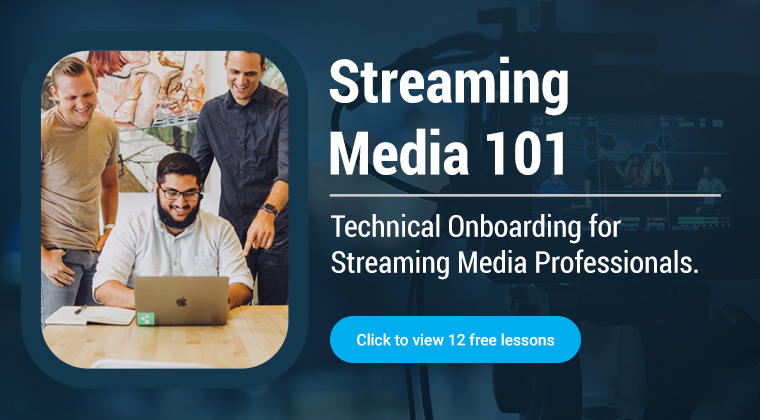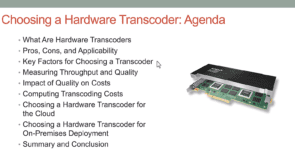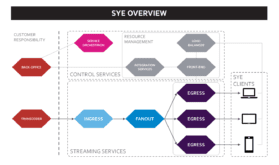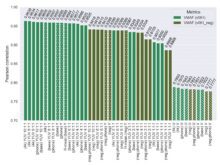The white paper, authored by researchers from the University of Science and Technology of China, introduces a novel approach to addressing the limitations of pre-trained learned image compression (LIC) models. These models, while effective within the domains they were trained on, often falter when applied to new, domain-specific data. To overcome this, the researchers propose lightweight adapters that allow efficient …
Read More »Following the Money: What the Lexis Nexis Patent Report Reveals About VVC and AOMedia
While researching my State of the Codec Market article for the 2025 Streaming Media Sourcebook, I stumbled upon an intriguing report from LexisNexis that sheds light on the patent ownership landscape for VVC and HEVC (link to report). For me, the report helped answer two critical questions: Will VVC be the next codec implemented on Smart TVs? Will AOMedia companies …
Read More »New Lesson Alert: Choosing a Hardware Transcoder Added to Streaming Media 101
We’re excited to announce the addition of a brand-new lesson to Streaming Media 101: Technical Onboarding for Streaming Media Professionals! Titled Choosing a Hardware Transcoder, this lesson dives into one of the most critical aspects of video processing today: selecting the right transcoder for your needs, whether in the cloud or on-premises. The lesson is available free to all current …
Read More »Fox’s 1080p to 4K Upscaling Workflow for Super Bowl 2025: An Engaging Debate
It started with a simple observation: Fox plans to upscale a 1080p HDR feed to 4K for the Super Bowl LIX broadcast. The comment came from Dan Rayburn, who shared details about Fox’s planned encoding ladder, including a maximum bitrate of 15 Mbps for 4K delivery. This revelation prompted a lively LinkedIn discussion among industry experts, exploring the decision’s technical, …
Read More »Sye: The Best Low-Latency Tech You’ve Never Heard Of
When your service spends a fortune on sports rights, the pressure on your technology team to deliver a flawless viewing experience is immense. It’s not just low latency; it’s synchronization across a range of playback devices driven by second-screen experiences and crisp, hiccup-free ad delivery. When it comes to delivering this type of experience, Amazon Prime Video has emerged as …
Read More »The Future of Targeted Ads: Lessons from Disney’s Ad Tech Evolution
As third-party cookies are phasing out, the race to refine first-party data strategies is on, and Disney is leading the charge. At CES 2025, Nadine Krefetz, contributing editor at Streaming Media, captured the key elements of Disney’s approach in her article, “CES 2025: Disney Ad Tech, Ad Targeting, and Ad Buying.” The piece provides an insightful glimpse into how Disney …
Read More »The New Face of FAST: How Original Content Is Redefining Free Streaming
When Free Ad-Supported Streaming TV (FAST) first emerged, its channels quickly became known as the home of dated, recycled TV shows and movies—free entertainment that offered volume but little innovation. As Bruce might have said, 57 Channels (And Nothin’ On). Today, that perception is rapidly changing. Platforms like Tubi and The Roku Channel are investing heavily in original content, reshaping …
Read More »Cracking the Code(c): It’s All About the Implementation
Free Webinar: Cracking the Code(c): It’s All About the Implementation January 30, 2025 – 16:00 GMT/11:00 EST/08:00 PST Last fall, I published a post called “There Are No Codec Comparisons. There Are Only Codec Implementation Comparisons.” The basic premise was stated in the conclusion, which reads, “the key point is that unless the study’s testing schema and codec selection aligns …
Read More »CSAI vs SSAI in Video Ad Insertion: A Comprehensive Guide with Recommendations
Introduction Ad insertion technologies play a crucial role in monetization strategies. Two primary methods dominate this space: Client-Side Ad Insertion (CSAI) and Server-Side Ad Insertion (SSAI). Understanding the differences, benefits, and challenges can help content providers optimize their ad delivery for user experience and revenue generation. Overview of Ad Insertion Ad insertion is the process of integrating advertisements into video …
Read More »VMAF, SSIM, and Color Spaces: Getting the Metrics Right
So there I was, having dinner on a Saturday night date night with my wife… And in comes a text: “Hi Jan, I was wondering when you compute SSIM, do you use a single channel or multi-channel? And if multi-channel, then anything different than averaging the three?” (And yes, anyone with children, even grown children, checks incoming texts on a …
Read More » Streaming Learning Center Where Streaming Professionals Learn to Excel
Streaming Learning Center Where Streaming Professionals Learn to Excel











